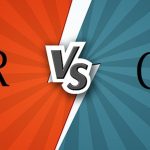CCCR Leak Test: Requirements, Method and Implications
By: Katherine Hatherley, LABORATORY TECHNICAL SPECIALIST, email
Ensuring the safety and quality of chemical products is a paramount concern for both manufacturers and regulatory bodies. One crucial aspect of this safety assurance is the Leak Test, as mandated by Schedule 3 of the Consumer Chemicals and Containers Regulations, 2001 (CCCR 2001) in Canada. Containers holding a liquid chemical product must pass the Leak Test. It is important to note the following:
- The testing must be completed on the product as it is sold to the consumer. You cannot substitute a different liquid or container.
- Every combination of container size + chemical product formula must be tested.
- Empty containers that are intended to store or dispense the product must also be tested.
- The test takes into account containers that are meant to release fumes or vapors.
- Single-use containers are exempt from this testing after opening. This is why single-use containers have specific labeling requirements.
Let’s explore the significance of the Leak Test, the testing method, and the broader implications for consumer safety against leakage hazards.
The Purpose of Leak Testing
The primary objective of the Leak Test is to guarantee the integrity of container closures, thereby protecting consumers from potential hazards associated with chemical leaks. Health Canada often requests this testing as a measure of product safety. While not every container in a production lot undergoes testing, it is imperative to ensure that any leakage is mitigated to prevent harm to consumers.
Key Considerations for Leak Testing
Several crucial considerations must be taken into account when conducting Leak Tests in accordance with CCCR 2001. Firstly, the testing must be performed on the actual product as it is sold to consumers, without any substitution of liquids or containers. Additionally, even empty containers intended for product storage or dispensing must undergo testing. The scope of the test also includes containers designed to release fumes or vapors.
Multiple Container Sizes
If one chemical product formula is sold in various container sizes, the product is expected to be tested in each container it is sold in. For example, if one formulation is sold in a 0.5L container, a 1L container, and a 1 gallon container, all three container + chemical product formula combinations must be leak tested. This example product would be considered as three test samples.
Exemption for Single-Use Containers
An essential exemption exists for single-use containers after opening. Such containers are not subject to the Leak Test post-opening, but they must comply with specific labelling requirements. This exemption recognizes the practicalities associated with single-use containers while maintaining a commitment to consumer safety.
Leak Test Method
To conduct the leak test method, the test sample is inverted at 45° below the horizontal, over a piece of filter paper. The containers must be temperature-conditioned. Any seals must be removed prior to inverting the container for testing. The closure must be in the lowest possible position. The leakage test duration is one hour. After an hour, the filter paper is examined for evidence of contact with liquid.
The leak test is a pass-fail test. Upon failure of the test sample container (i.e. if leak detection occurs), the entire production lot is considered to have failed as well. A failed leak test indicates potential hazards to consumers arising from the fault of the container closure.
Broader Testing Considerations
While Leak Testing is a critical component, other tests, such as aging or life tests, ensure that containers remain compliant throughout their shelf life. These tests support packaging requirements for safe transport, contributing to an overarching commitment to consumer safety.
Partnering with ISO-Accredited Laboratories
To ensure the thoroughness and accuracy of Leak Testing, manufacturers are encouraged to collaborate with ISO-accredited laboratories. One such reliable partner is Dell Tech, offering comprehensive chemical lab testing services and compliance consulting. Beyond Leak Testing, Dell Tech’s Product Safety Group also assists in ensuring that product labelling aligns with the stringent requirements of CCCR 2001.
The Economic Impact of Effective Leak Testing
While implementing rigorous testing procedures incurs initial costs, the long-term economic benefits cannot be overstated. Avoiding product recalls, legal battles, and damage to reputation ultimately contributes to cost savings. Moreover, by investing in quality assurance, manufacturers demonstrate a commitment to producing reliable, safe products, potentially attracting more customers and fostering brand loyalty.
Environmental Considerations and Leak Testing
Leak testing also aligns with environmental sustainability goals. Ensuring that containers are leak-free minimizes the risk of chemical spills, which can have detrimental effects on the environment. Manufacturers, by prioritizing leak testing, contribute to environmental protection and demonstrate corporate responsibility.
In conclusion, Leak Testing is not merely a regulatory requirement but a fundamental aspect of responsible manufacturing. Adhering to standards such as those outlined in CCCR 2001 is a commitment to consumer safety, brand integrity, and environmental stewardship. Manufacturers must view these regulations as an opportunity to enhance their processes, protect their consumers, and contribute positively to society.
In a landscape where consumer expectations are increasingly shaped by a company’s dedication to safety and quality, implementing robust leak testing procedures becomes a strategic imperative. By doing so, manufacturers not only meet regulatory standards but also pave the way for sustainable growth and long-term success.
Dell Tech has provided professional, confidential consulting services to the specialty chemical
industry in Canada, the USA, Europe, and Asia for the last 40 years.





